For Memorial Day this year we thought it would be pertinent to share one of the most iconic military motorcycles built, the Harley-Davidson WLA. The WLA is also known by the nickname "Liberator", as they were ridden by troops working to liberate occupied Europe.
The World War II Era Harley-Davidson WLA "Liberator"
The 1942 Harley-Davidson WLA Liberator stands as a symbol of American craftsmanship and resilience. This legendary motorcycle played a pivotal role in World War II, serving the armed forces with distinction.
In Harley-Davidson Motorcycle model codes, the "W" in WLA stands for the 45 ci flathead engine. The "L" means it is high compression, and the "A" stands for Army. Harley-Davidson also produced a smaller number of slightly different WLC models, which were built for the Canadian Army.
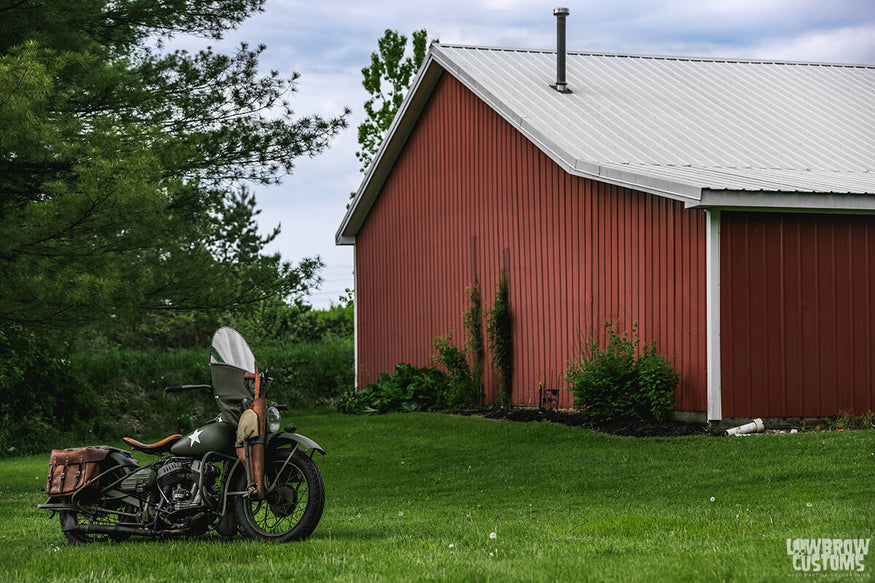 Joe Blaha's beautiful Harley-Davidson WLA.
Joe Blaha's beautiful Harley-Davidson WLA.
The History Of The Harley-Davidson WLA
Harley-Davidson began production of the WLA in 1940, prior to the United States entering the war. Production ramped up as America entered World War II, with over 90,000 WLAs being produced. In addition to full motorcycles, countless spare parts were also produced to keep these wartime machines running in the tough environments in which they were ridden.
An unusual thing about the serial numbers found on WLAs produced after Pearl Harbor is that, despite the year they were actually produced, the serial number still reflects a production year of 1942. These machines produced during actual war-time are known as 42WLAs.
Harley-Davidson WLAs were not only used by American troops, they were also shipped to allies all over the world, including over 30,000 that were sold to the Soviet Union.
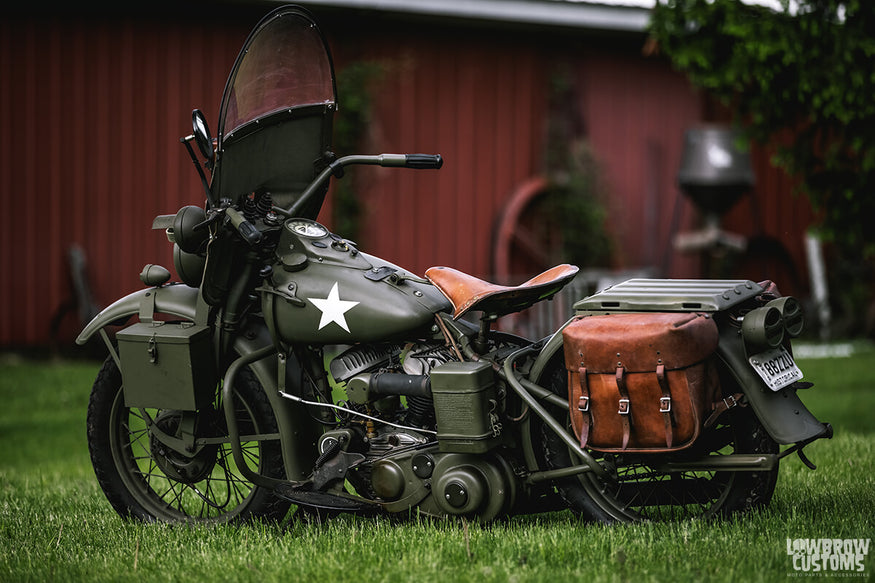 Just an incredible bike with so much detail and so many parts to look at.
Just an incredible bike with so much detail and so many parts to look at.
THE 1942 HARLEY-DAVIDSON WLA’S DISTINCT FEATURES
Harley-Davidson's engineers poured their expertise into the development of the WLA. Its rugged frame, robust engine, and specialized features were meticulously designed to withstand the challenges of war zones.
Engine and Performance
The heart of the WLA was its robust 45 cubic inch, side-valve V-twin Harley-Davidson engines. It provided ample torque and reliability, ensuring the motorcycle could handle the toughest conditions.
Design and Aesthetics
The WLA's design was both functional and aesthetically pleasing. Its distinctive olive drab paint, blackout lighting, and signature springer front end added to its unique charm.
Durability and Reliability
One of the standout features of the WLA was its durability. It could endure harsh climates, rough terrain, and the rigors of military use without faltering, earning it a reputation for reliability.
THE USES OF THE HARLEY-DAVIDSON WLA FLATHEAD LIBERATOR
Motorcycles were used by the US Army for police and escort work. In addition, they were used for courier duties, as they were very capable at navigating rough terrain. Some scouting was done by motorcycle, however, unlike the German army, the allies did not use motorcycles as combat vehicles or for troop transport. Hence, allied motorcycles were rarely equipped with sidecars.
For some great photos of motorcycles being used in WWII, and how war has changed motorcycles and motorcycling culture, check out our article WWII and the Impact On Motorcycles.
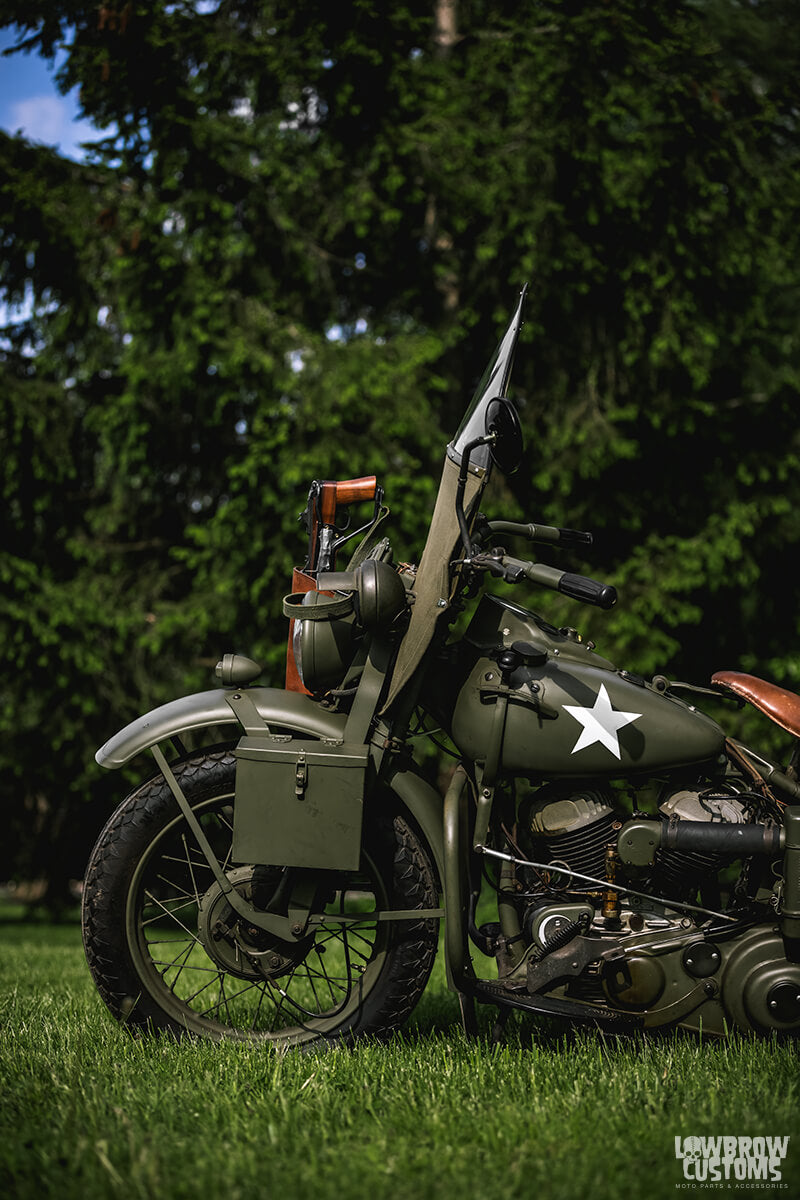 Tank shift
Tank shift
The Harley WLA After World War II
The wartime production of WLAs ceased at the end of WWII, however, they were once again produced from 1949-1952 during the Korean War. War surplus motorcycles were plentiful and inexpensive, and helped popularize motorcycling.
Soldiers coming home from overseas pursued motorcycling, something they had been exposed to while they were in the service. WLAs were 'civilianized' and ridden on the street, as well as stripped down to lighten them up and raced. These activities were the early origins of choppers and custom built motorcycles.

Meet Joe Blaha and his 1942 WLA
Joe Blaha, located in Rock Creek, Ohio was gracious enough to let us inside his private museum filled with over thirty vintage tractors, a slew of old steam engines, and a couple dozen vintage motorcycles.
This bike was fully restored about 10 years ago. Every minute detail was taken to make sure this bike looked exactly as it would have coming off the Harley-Davidson factory floor in Milwaukee, Wisconsin, USA. From the ammunition box on the front fender, to the gun holster that houses not only a rifle but doubles as a place to mount a US Military shovel.
The seat is the exact seat you would have found on these bikes along with the saddle bags. Everything is top notch on this bike and you could just feel the history ooze from every nut and bolt.
 Think of the experiences had riding along on a seat such as this on one of these machines in war time.
Think of the experiences had riding along on a seat such as this on one of these machines in war time.
After taking about an hour drooling over this bike and getting a ton of great shots to share with all of you I thanked Joe and was about to go on my way when he took me on a tour of his museum and his current projects.
I don't think the man sleeps! There were probably 6 or 7 different Indian and Harley-Davidson restorations he was currently working on, and a 50's Jeep to boot.
I am extremely grateful for Joe and his friendship and I personally thanked him again for letting us take some photos of his WLA. We are eager to share it with the world, and hope you enjoy it as much as we do. Enjoy!
Words and Photos by Mikey Revolt
Detail Photos Of The Harley-Davidson WLA
 B-side of the engine. Check out that air cleaner.
B-side of the engine. Check out that air cleaner.
 So cool to see the care instructions on this air box.
So cool to see the care instructions on this air box.
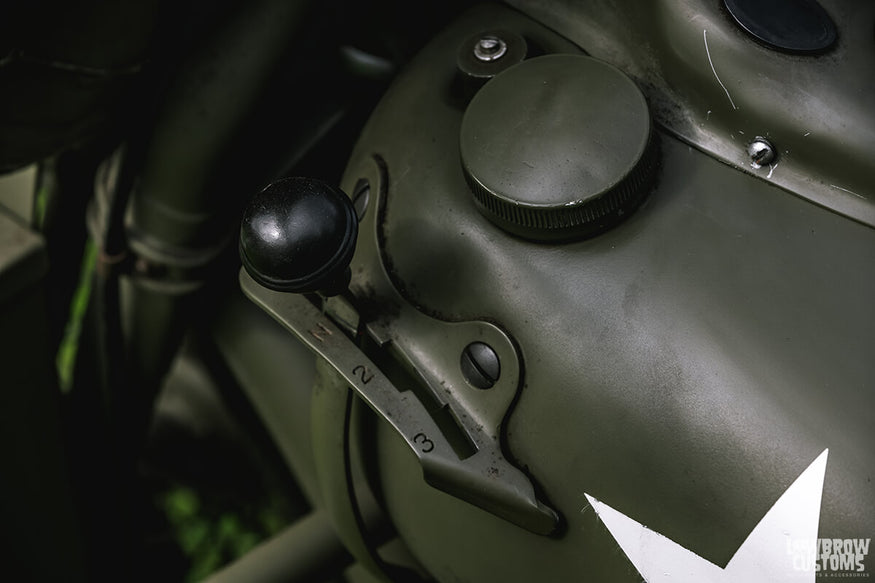 Tank shifter, foot clutch.
Tank shifter, foot clutch.
 One of the coolest pieces on the bike.
One of the coolest pieces on the bike.
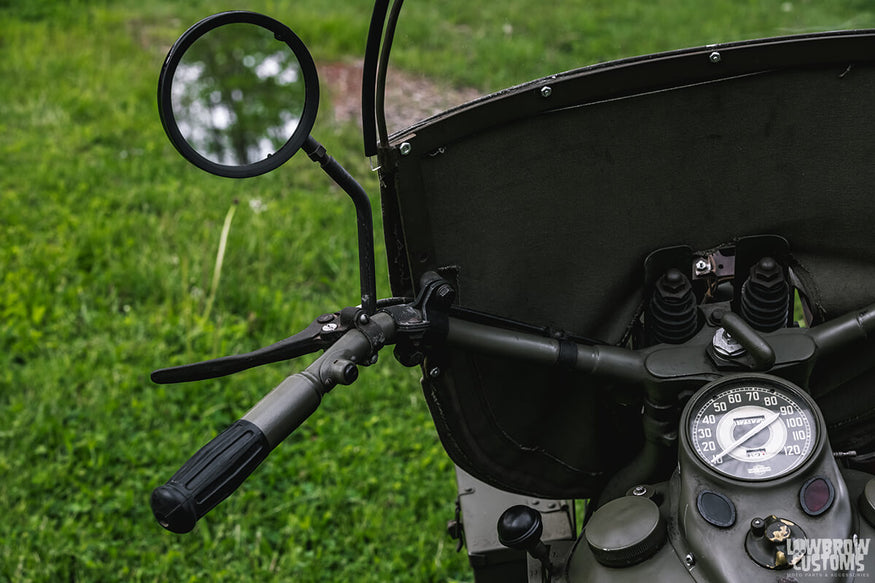 Watch out behind you.
Watch out behind you.
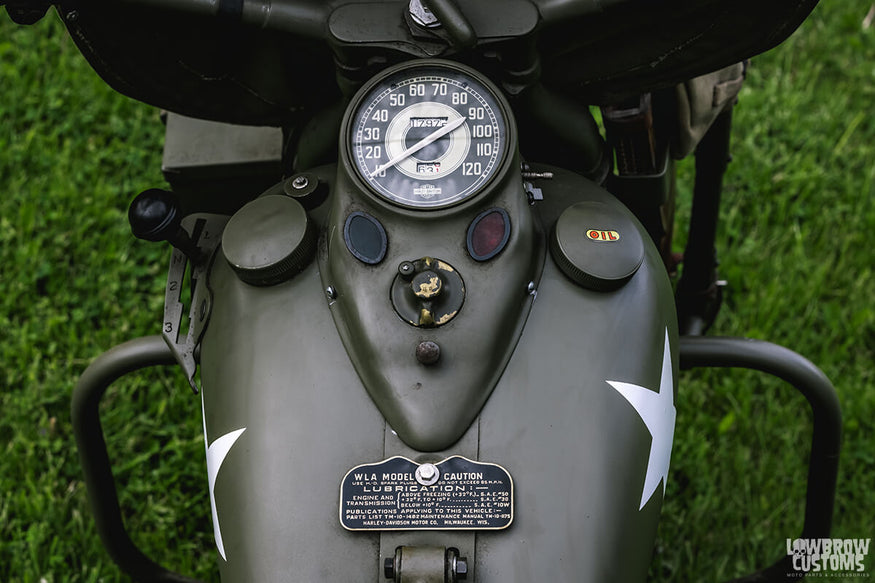 Dashboard view.
Dashboard view.
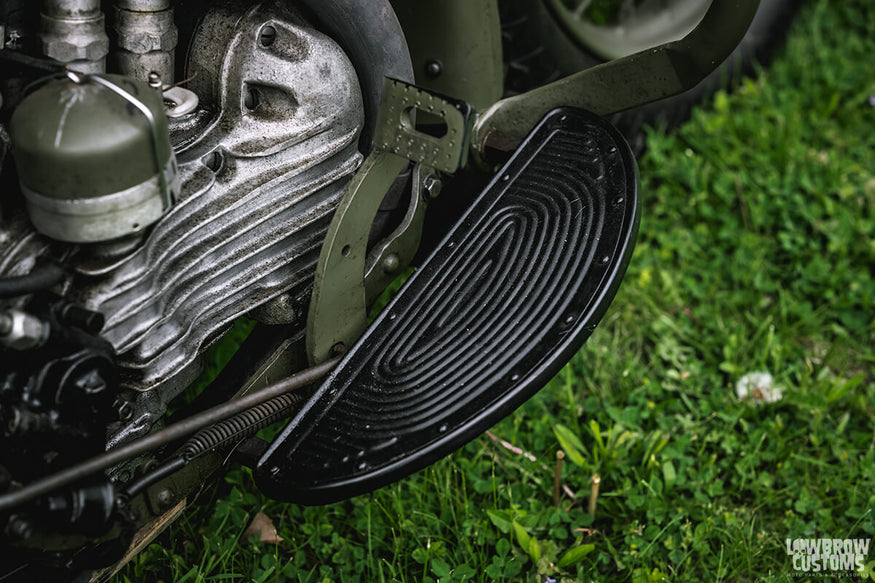

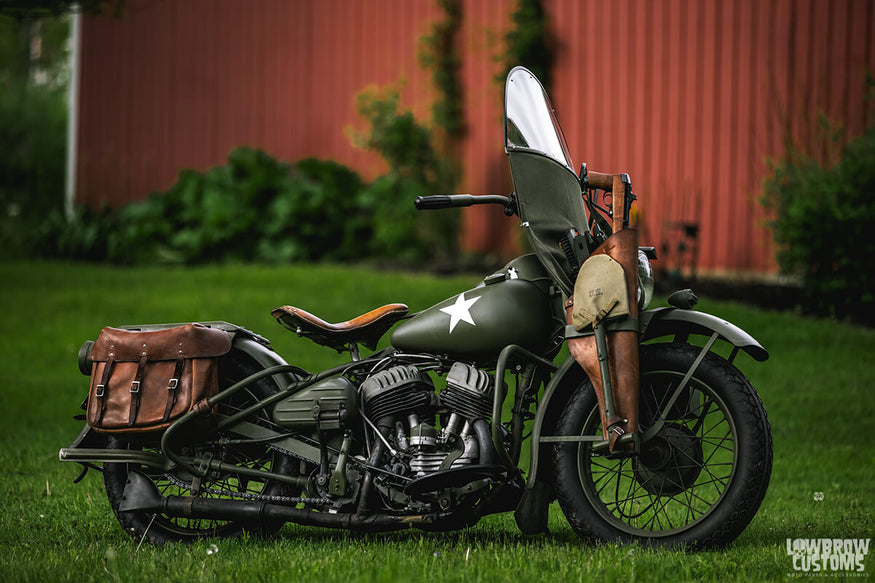 Just a workhorse on two wheels.
Just a workhorse on two wheels.
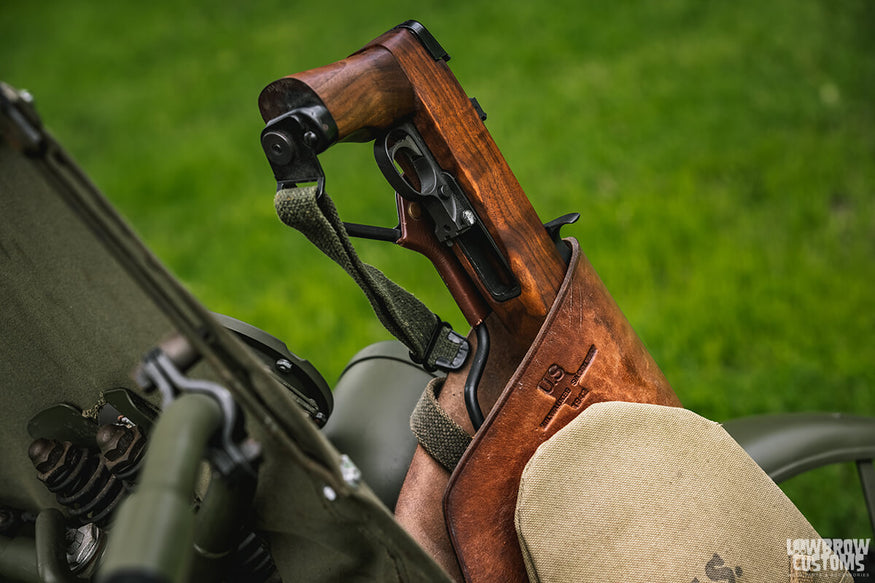 Easy access.
Easy access.


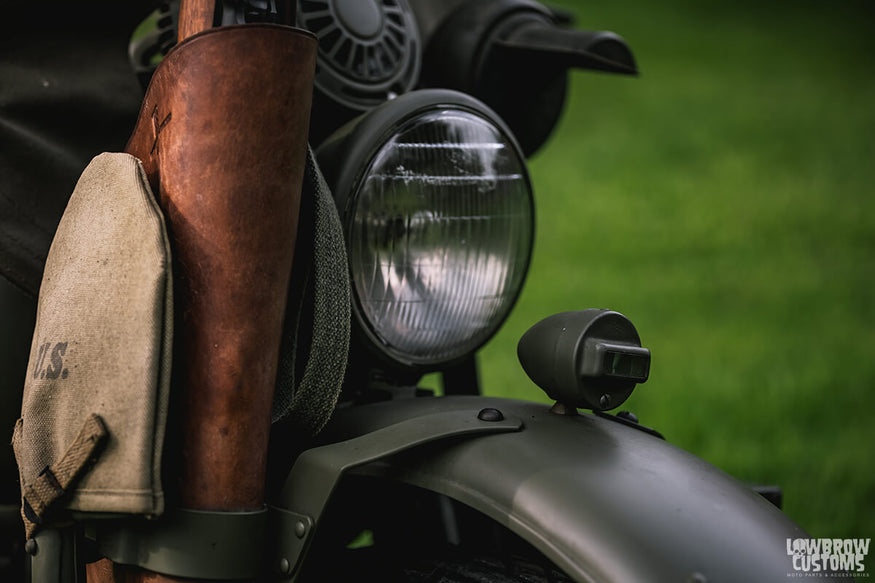
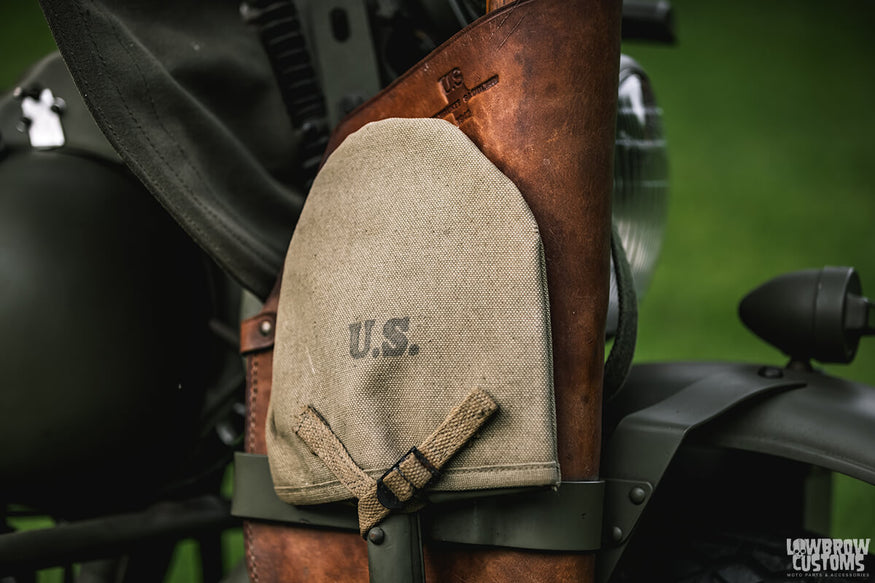 Another just super cool piece on this bike, this US military shovel and holder.
Another just super cool piece on this bike, this US military shovel and holder.


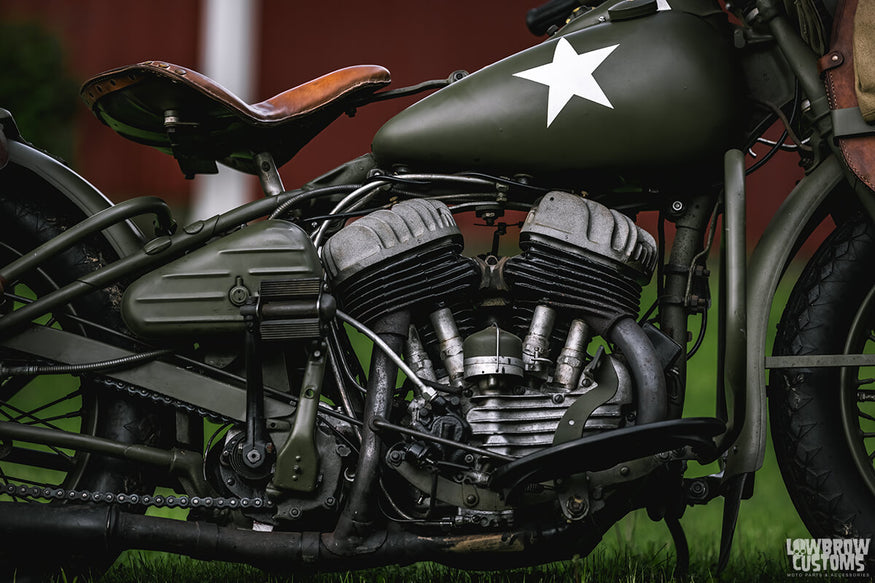 That 45 cubic inch flathead motor.
That 45 cubic inch flathead motor.
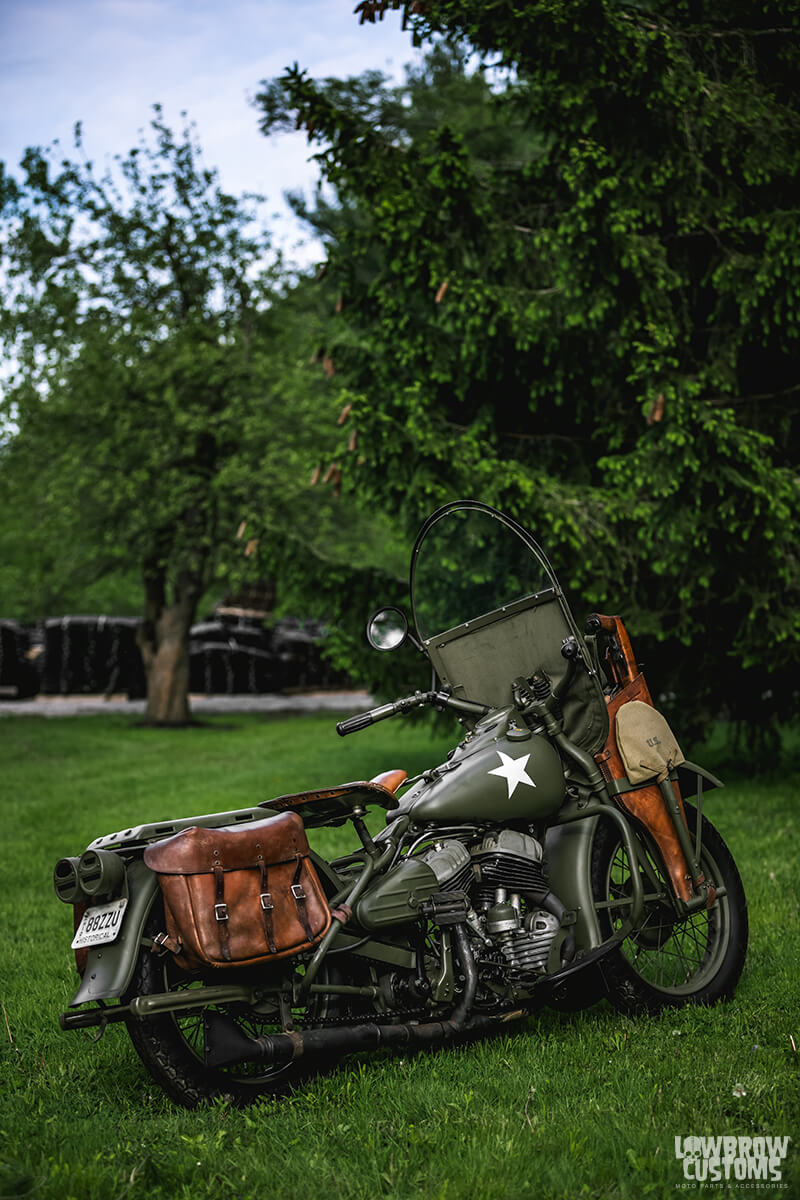

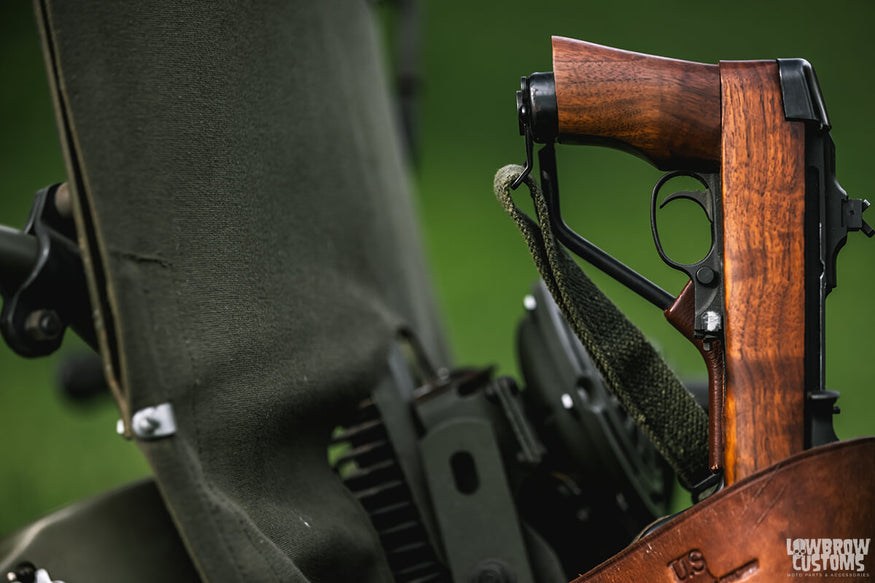
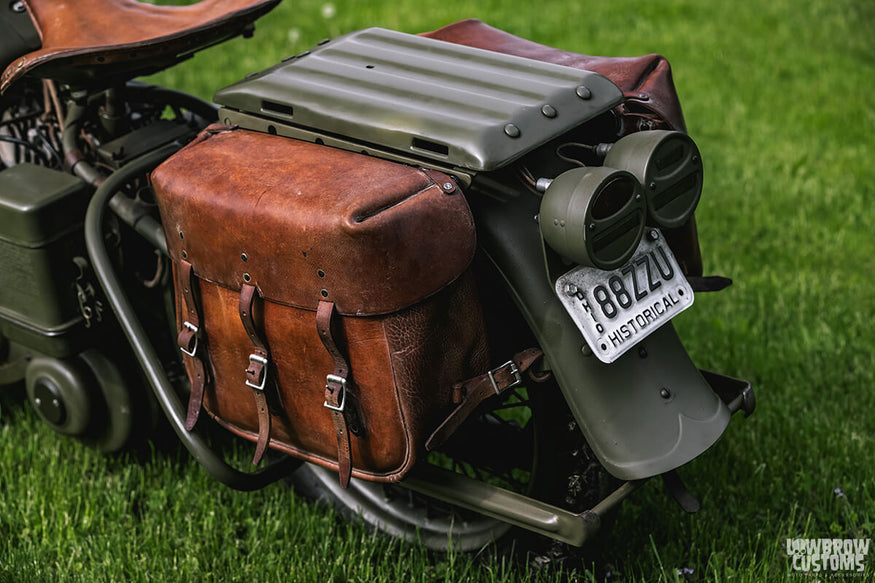 This bike was definitely made to carry a lot of gear!
This bike was definitely made to carry a lot of gear!
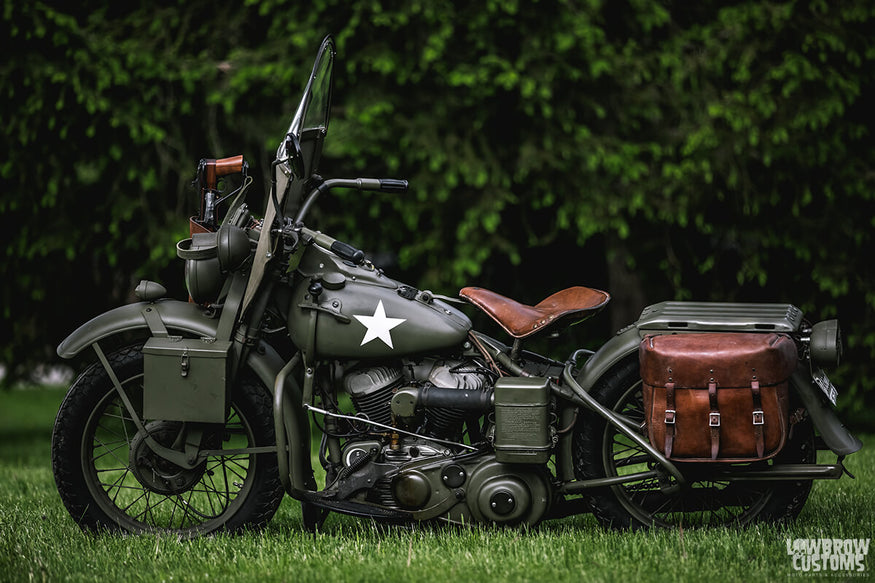 WW2 - 1942 Harley-Davidson WLA
WW2 - 1942 Harley-Davidson WLA
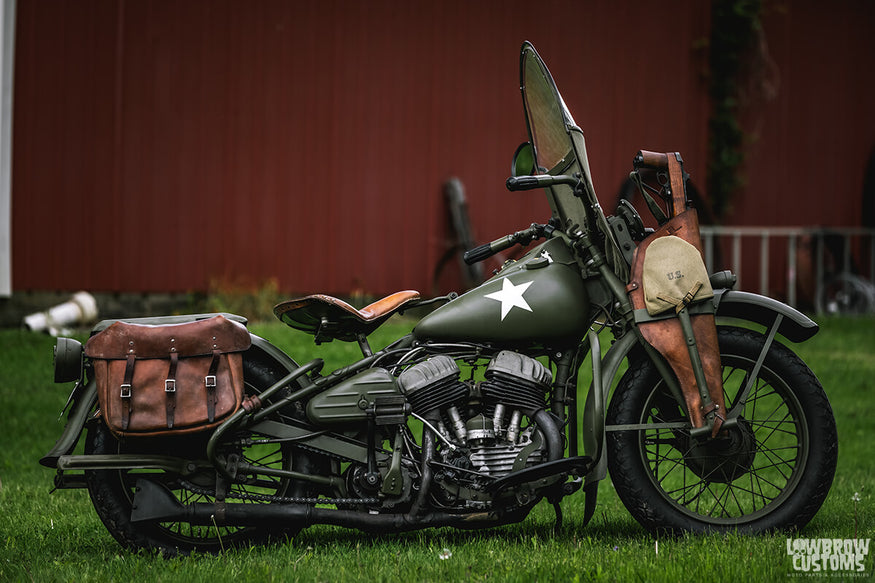 US Military 1942 Harley-Davidson WLA
US Military 1942 Harley-Davidson WLA
Related Products

















